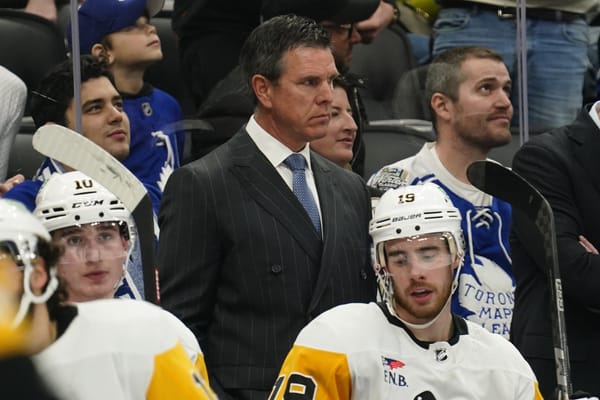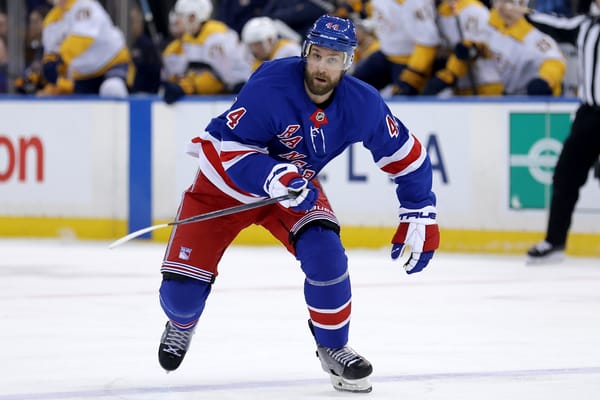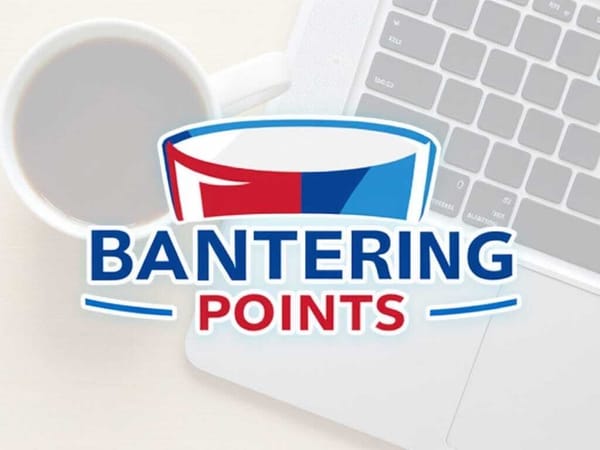The Rangers Are Rebuilding, Not Tanking
There’s been a lot of talk about the New York Rangers — suddenly and shockingly a team flush with cap space — taking on other team’s problem deals to help give them cap relief. For assets, of course. Don’t forget about the assets.
A few names have been thrown out. Bobby Ryan (four years left at $7.25-million per), Ryan Callahan (two years left at $5.8-million per), or Braydon Coburn (one year left at $3.7-million per). Milan Lucic represents another option in the Ryan stratosphere, although one with much bigger complications — and thus possibilities.
This has become a relatively decisive topic these days, which really isn’t surprising. People who still believe the Rangers plan to be (and will actually be) very good this year balk at the idea of bringing on a bad contract. People who don’t think the Rangers should be a team that becomes a garbage heap are annoyed by it as well — although that’s never been the argument. Then there’s some who look at the rumors that Callahan could return and don’t understand why the Rangers would target him — missing the point that it’s not him they want, but what comes with him.
There are a few truths that need to be established before we go further.
1) The Rangers do not plan on tanking. They are not intentionally icing a team they know will easily put them into the lottery conversation; full stop. You may disagree with this logic, but you cannot disagree with the fact itself. If they intended to tank they would have moved Mats Zuccarello, probably would have traded Kevin Hayes, and at least entertained conversations on Kevin Shattenkirk. They feel as though they’ve skipped a step in the rebuild with last year’s selloff, right or wrong, and that they can move past bottoming out to the “rebuilding while still seeing how good we are” stage. It is what it is.
2) The Rangers do not plan on being contenders next year. Period. End of story. I’m not sure why this continues to be argued and dissected. The Rangers may end up being competitive (aka: maybe they make the playoffs or get close) because their forward group is actually pretty solid, and they still have Henrik Lundqvist. The defense however, even with a resurgent Brendan Smith assumption, is a hot mess. On the most recent podcast Mike and I both thought the Rangers would finish in the 70-80-point range on the year. Is it bothersome that they’ll be stuck in the dreaded middle? Sort of, but not really since they are gunning for youth and development. They’re just not bottoming out.
3) With all of that said, the Rangers are still rebuilding. They’re rebuilding. They. Are. Rebuilding. R-E-B-U-I-L-D-I-N-G. Keep reading that until you understand that, yes, the Rangers are rebuilding. Are you planning on scrolling down this story to yell at me in the comments? Type out strongly worded comments about how this isn’t a rebuild because the Rangers didn’t really tear it all down and they’re not trying to bottom out? Read the first three sentences again. Yes, it’s a rebuild, not a tear down, but they are two different things. You tear down to tank, you rebuild to start the process of building back up. My bet is Gorton and company are eyeing 2020 as the first year of expected playoff contention, which is why we all keep talking about that “two-year window” when it comes to eating bad contracts.
With that out of the way, we need to get to why this is something the Rangers would look into doing.
For starters, here’s the current framework of the team: The Rangers have over $23-million in cap space as of this writing, with Jimmy Vesey, Hayes, Ryan Spooner, Skjei, Rob O’Gara, and John Gilmour left unsigned. Let’s assume the following:
Spooner — Signs a one-year deal for $3.8-million
O’Gara and Gilmour — Sign contracts that are under $1-million and can be buried in the AHL.
Vesey — Signs a two-year bridge deal worth $2.5-million per year
Brady Skjei — Signs a five-year, $4.6-million per year deal
Kevin Hayes — Signs a five-year, $5.5-million per year deal
That still leaves roughly $7.3-million dollars in cap space. Make it roughly $6.7-million if Alex Georgiev makes the team as the backup (as expected).
Now, there’s something to be said for having cap flexibility in a world where star players suddenly hit the trade market (Erik Karlsson), or appear to be heading toward free agency (Artemi Panarin next year). It also leaves room to make sure you can keep your own good players in the event they explode onto the scene and suddenly cost way more money (Pavel Buchenvich being the example here). But there’s also something to be said for a rebuilding team to look at what they would consider “wasted years” and try to recoup assets in that time frame.
As I said above, 2020 seems to be a realistic opportunity for the Rangers to roll back into contention. Lias Andersson, Filip Chytil, Libor Hajek, Vitali Kravtsov, and maybe Nils Lundkvist should be on the every day NHL roster — and in the case of Andersson and Chytil, having grown into a better version of what you’d expect from them. Buchnevich and Brady Skjei should be at the top of their game. Mika Zibanejad, Hayes (if he is still around) and Kevin Shattenkirk will still be around and on the right side of their prime. The Rangers will have decisions to make the summer before on Chris Kreider and Vlad Namestnikov. Mats Zuccarello’s decision will come a year sooner. That doesn’t even include guys like K’Andre Miller, Brett Howden, Yegor Rykov, and maybe Ryan Lindgren who might be NHL regulars around then as well.
A good portion of the core you want to build around will be there, along with an influx of youth and skill. It’s a good place to be in, and the Rangers are one of the least handcuffed teams in terms of players signed beyond 2020.
Good morning,
— Sean Tierney (@ChartingHockey) July 8, 2018
NYR only has five NHLers with contracts that 20-21 and then only one skater (DJ Zibanejad) in four years. That's an incredibly clean cap sheet. pic.twitter.com/5yRecnpmCA
Which brings us back to today. You know, the year 2018. The window to get from here to there is two years, and thus why the conversation about taking on salaries like Callahan and Coburn shouldn’t be met with such disdain.
I don’t know what the assets coming back to the Rangers for being a garbage dump are going to look like. If Callahan and Coburn are coming back, I would expect a nice little package. If both Ryan and Callahan are coming back in a hypothetical Erik Karlsson (unlikely) then I need something like Mikhail Sergachev. Again, full stop.
You see, Tampa needs the space, and they need it now. If the deal goes through to Tampa Bay, the Rangers have a vested interest in helping Tampa win — since they have a condition on Tampa’s 2nd round pick in 2019 the Rangers own to turn into a 1st if they win the Cup this year. If it’s just Callahan, you’re obviously not getting Sergachev, but you might still be getting a nice pick/prospect. Is it worth it to take Callahan if Tampa turns their conditional 2nd into a guaranteed first and then adds the 2nd as well? (Remember that just guaranteeing the 1st has no value to Gorton since it could happen anyway.)
These are the conversations you need to have when you’re rebuilding. The Rangers are pushing forward, yes, but they’re doing so with an eye on what they have in their cargo hold. They’ve pushed their farm system from one of the worst (if not THE worst) in the NHL to one that’s firmly in the better half of the league, and that’s important too. For too long the Rangers pushed ahead with no fuel in the tank, and those days seem to be long gone.
So, yes, the Rangers are not going to be good next year. No, they’re not tanking.
But they are rebuilding. And that’s OK.





